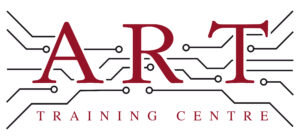Definition
Negative Etchback is a process used in electronics manufacturing, particularly in the fabrication of printed circuit boards (PCBs). It involves the intentional removal of material from the surface of a PCB to create a specific profile or to prepare the surface for further processing. This technique is crucial for ensuring proper adhesion of components and achieving desired electrical characteristics.
How It’s Used in the Industry
In electronics assembly, Negative Etchback is applied during the PCB manufacturing process. Initially, a layer of photoresist is applied to the PCB surface. After exposure and developing, the negative etchback process removes unwanted copper, defining the circuit paths. This step is essential for ensuring that the solder joints form correctly during assembly. For technicians in training, understanding this process helps them grasp the importance of precision in PCB design and assembly, while experienced professionals rely on it to maintain high-quality standards in production.
History & Origins
Negative Etchback became prevalent in the electronics manufacturing industry during the late 20th century, coinciding with the rapid advancement of PCB technology. As the demand for miniaturisation and increased functionality in electronic devices grew, manufacturers adopted more precise etching techniques. The development of IPC standards helped formalise these processes, ensuring consistency and quality across the industry. This evolution marked a significant shift towards more reliable and efficient electronic assembly methods.
Variations
There are several variations of Negative Etchback, including different chemical etching solutions and methods like plasma etching. Each variation may be suited to specific materials or desired outcomes. For example, plasma etching can provide a more controlled and uniform etchback compared to traditional chemical methods. Understanding these differences is essential for learners as they navigate the complexities of PCB fabrication and choose the right approach for their projects.
Modern Applications
Today, Negative Etchback is widely used in the production of both surface mount and through-hole PCBs. Its relevance extends to advanced assembly techniques, where precision is critical for ensuring quality and reliability. Compliance with IPC standards remains a priority, as manufacturers aim to produce durable and efficient electronic components. This process is also essential in training environments, where students learn the importance of accuracy in PCB design and assembly.
Practical Tips & Training
When working with Negative Etchback, it is crucial to follow safety guidelines, such as wearing appropriate personal protective equipment. Inspecting the etched surfaces with magnification tools can help identify any defects early in the process. Structured training and certification in electronics are vital for understanding these techniques, as they equip technicians with the skills needed to maintain high standards in PCB manufacturing and repair.


